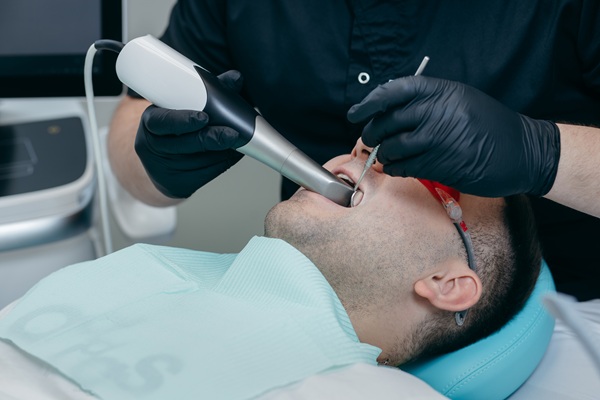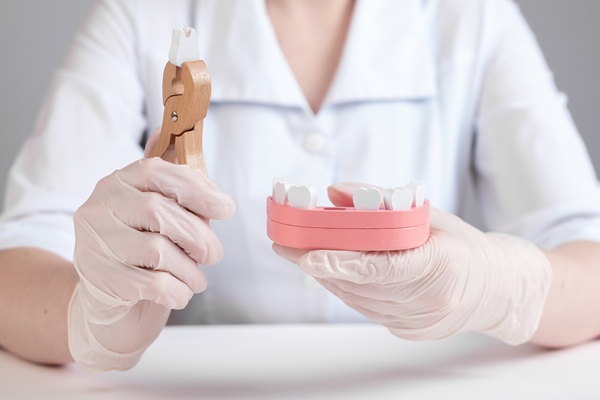How a Periodontist Can Help With Receding Gums

A periodontist can help improve gum recession. This is one of the first signs of gum disease. Seeing this dental care provider early can help you target the problem with the necessary treatment. Here are the details on how a periodontist can help fix receding gums.
For mild gum recession
Getting a regular professional dental cleaning can remove the plaque and dental calculus on the surface of teeth. This will include the surfaces underneath the gumline. The deep cleaning process is also referred to as scaling and root planing. The dentist will use instruments to clear and smoothen the dental roots.
Making the roots smooth again can help the gum tissue reattach well to the teeth. This will help prevent the formation of gum pockets and the buildup of bacteria. The patient must follow the periodontist’s suggestions after this treatment. Returning for regular cleanings can stop the worsening of gum disease and gum recession.
For moderate to severe gum recession
In some cases, deep cleaning is not enough to correct gum recession. The periodontist will recommend a higher level of gum therapy for the patient. Open flap scaling and root planing is a common type of surgery for receding gums. The dentist will perform a deep cleaning treatment, but opening the gum tissue will come first.
Creating a flap will expose the dental roots. This will allow the periodontist to clean the roots well. The dentist will replace the gum tissue flap. This will give the gums a chance to tighten. The effect will reduce the depth of the gum pockets between the teeth and gums.
For severe gum recession, the periodontist will suggest a more invasive solution. The procedure will be a gum graft. The dentist will harvest healthy gum tissue and then attach the tissue to the exposed dental roots. Once the area heals, there will be a reduction of symptoms. This surgery will also stop the recession from worsening.
On the pinhole surgical technique
A gum graft surgery is invasive. It also needs a longer recovery time. A pinhole surgery makes a tiny hole in the affected gum tissue. The periodontist can loosen and reposition the gum tissue. Doing so can move the tissue to cover the dental roots. This is a fast surgery that can be over in less than an hour.
The periodontist will make a small hole in the gum tissue. From this hole, the dentist can loosen the gum tissue and move it down. This will allow the tissue to cover the dental roots. It can also make more gum tissue visible. Here are the benefits of a pinhole surgery:
- It is less invasive. The procedure results in a quick recovery period. The patient can return to daily activities right after the surgery.
- It does not need stitching or incisions. A tiny hole is enough to improve the gum’s condition.
- It is less painful. The periodontist will make the gum adjustments from a tiny hole.
- It does not need gum tissue grafts. The dentist will not need to harvest healthy gum tissue from the palate.
Receding gums can improve with the help of your periodontist
Gum recession is an early sign of gum disease. Without proper treatment, the gums will recede even more. Your periodontist can examine your gums and provide the necessary treatment to fix the problem. Working with your dentist can prevent your receding gums from worsening.
Request an appointment here: http://www.periodontistboca.com or call Thomas A. Copulos DDS, PA at (561) 763-1066 for an appointment in our Boca Raton office.
Check out what others are saying about our dental services on Yelp: Periodontist in Boca Raton, FL.
Recent Posts
Oral cancer screenings can lead to early detection and less invasive treatment. This quick and painless process enables dental providers, such as periodontists, to detect signs of abnormal tissue changes that may indicate or develop into oral cancer. Through these screenings, patients can better understand their risks and take proactive steps to maintain both oral…
Appearance may be one of the first things people think about when it comes to tooth replacement. However, improved appearance is just one of the many benefits of replacing missing teeth. Tooth replacement can be key to improving not only how you feel about your smile but also boosting your oral health.Whether one chooses dentures,…
Wondering whether a periodontist can treat receding gums? Read on to learn more. Due to the increasing awareness about dental hygiene, many people are worried about gum recession. This issue is not just cosmetic: It may signal underlying dental problems that could cause serious health problems if ignored. Although routine dental care such as brushing,…
An oral surgeon might recommend the sinus lift procedure if your jawbone needs to be built up so it can hold dental implants. Also known as a sinus bone graft, the treatment is used to build bone tissues in the upper jaw. Oral surgeons or periodontists typically perform the procedure. Patients need to be fully…


